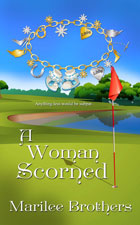Champagne
We took a long vacation from our trip between Alsace and Champagne, but I hope you enjoyed the last article about wines to enjoy during warm (hot, here!) weather. So, on to another French wine region... Champagne!
Everywhere sparkling wine is made, it is always distinguished from Champagne, even though all of the best sparkling wines are made in a virtually identical manner - Methode champenoise (meaning second fermentation). The reason Champagne is held apart from, if not above, all other bubblies is not necessarily because it's better but because the region is unique. It is France's northernmost viticultural district. The Champagne grapes struggle for ripeness here, producing base wines of high acidity and nuanced flavor, ideal for making the sleekest and subtlest of sparkling wines. The soil is chalk and limestone.
The grape varieties that make up Champagne are:
- Pinot noir (approximately 38%) gives backbone, power, richness of flavor and depth of character. Blanc de Noirs are entirely the pinot noir grape.
- Pinot meunier (approximately 35%) is perfumed, gives fruit flavor on mid-palate, softness and ages more rapidly.
- Chardonnay (approximately 27%) adds less alcohol, delicacy, elegance, finesse and freshness and contributes to the acidity. Blanc de Blancs are made solely from the chardonnay grape.
Champagne, along with Port and Sherry, is one of the world's most complicated wines to make. Because black grapes are the majority and no color is wanted, handpicking and gentle pressing is necessary for rich sugars and desirable acids. Varietal character is not the object (like Burgundy). Much of the flavor and style comes from aging on lees and the overall terroir of the region. The producers in Champagne are "houses" and there are about 140 houses.
The first fermentation goal is to produce still wine with high acid and moderate alcohol to serve as a base. It's generally done in stainless steel or concrete, but some houses use old oak casks. For non-vintage Champagne, production is house style (same style, year to year) using stocks from different grape varieties, vineyards, villages and vintages. Non-vintage is the norm at 85 percent of all production. It can't be put on the market until one year after bottling. Vintages, for vintage Champagne, are declared three times a decade, on average, and the grapes must be 100 percent from that vintage and can't be put on the market until three years after bottling (needs five years on lees).
The second fermentation has a mixture of wine, sugar and yeast added before the bottle is sealed with a temporary crown cork that is designed to catch sediment. The natural carbon dioxide (CO2) is trapped inside each bottle. The trapped CO2 will eventually become Champagne's bubbles. Bottles are stored horizontally in chalk cellars with a constant cool temperature to allow secondary fermentation to take place. Wines are worked slowly over a period of time from horizontal to vertical so the deposit slides gently down into the crown cap and doesn't get shaken about. To eliminate sediment, two processes take place: remuage, working the sediment on the side of the bottle into the neck; and degorgement, removal of sediment from the bottle by the pressure when the bottle is opened. To minimize the loss of wine the neck of the bottle is frozen in brine solution and the ice holds the now solid sediment in place. The crown cap is removed, ice plug with sediment is ejected and the final cork inserted.
Champagne styles are determined after second fermentation when the bottle is topped up with a mixture of wine and cane sugar solution called liqueur d'expedition:
- Brut - less than 15 grams sugar/litre (g/l), driest
- Extra Dry - 12-20 g/l
- Sec - 17-35 g/l
- Demi-Sec - 33-50 g/l
- Doux - 50+ g/l, sweet
From the vineyards of Champagne its wines have become the ones we use to mark the most important moments in life. When we marry, when a child is born, when we land a new job. Champagnes have a celebratory status no other wine has.
Cheers,
Durella DeGrasse
Certified Wine Professional
Return to Marilee's Washington Wine page

